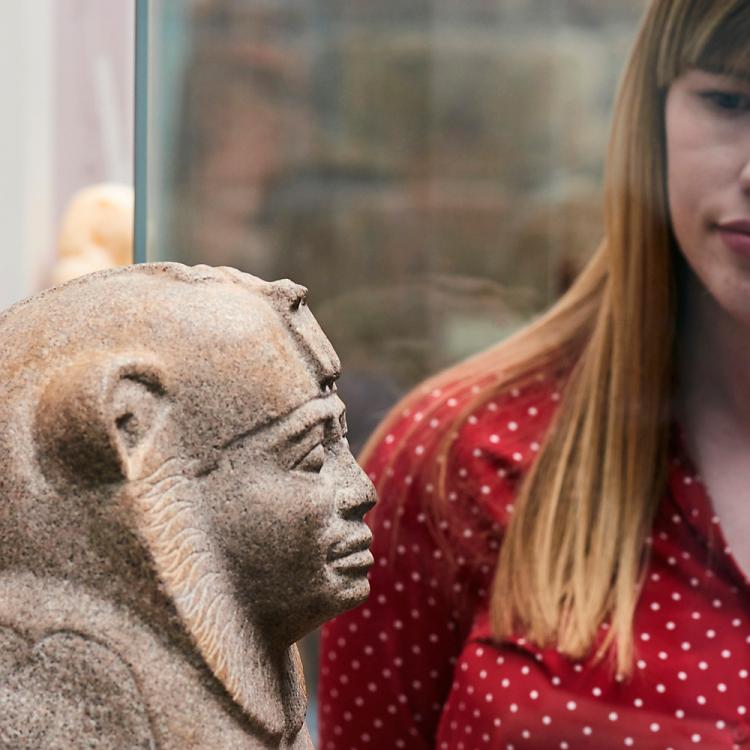Visiting the gallery
Opening times
Daily: 10.00–17.00 (Fridays: 20.30)
See full opening hours
Advance booking advised
Gallery audio guides
Listen on the Audio app, available on the App Store and Google Play.
This gallery tells the story of Sudan, southern Egypt, Nubia and the river Nile.
A corridor for trade and the movement of people and ideas, this territory was home to major civilisations. For thousands of years it was a vital link between central Africa, Egypt, the Eastern and Western deserts and the Mediterranean world. The objects shown here reflect the diversity of cultures and art inspired by a mix of indigenous, Graeco-Roman, Byzantine and Pharaonic sources.
Found on the first floor, Gallery 65 displays objects from 100,000 BC to the Islamic period, including ancient rock art, a Kerma burial, plus elaborate religious and household goods.
Take a virtual tour
Explore the fascinating everyday objects of Sudan, Egypt and Nubia, including pottery, tools and jewellery, using Google Street View.
Gallery facts
Located upstream of the First Cataract of the Nile – today northern Sudan and Upper Egypt – people lived in ancient Nubia from at least 300,000 BC, and the area was later home to the earliest sub-Saharan urban culture in Africa.
The culture and urban society of Kerma flourished between about 2500–1500 BC. This vast state constructed large burial mounds (tumuli) for their rulers, who were accompanied in death by human sacrifices, and created some of the finest pottery ever made in the Nile Valley.
Cattle herding was a key activity across the many cultures that coexisted in Sudan, so cows and bulls often feature in funerary offerings and art.
Gallery facts
Nubia's many resources included gold, ivory, ebony, animal skins and precious stones, often traded with Egypt and further afield.
Ancient Nubia and Pharaonic Egypt traded and at times fought over resources. In the Middle (c. 2055–1650 BC) and New Kingdoms (c. 1550–1069 BC) Egypt colonised Nubia and occupied parts of the region. Later, in the eighth century BC, the Sudanese Kingdom of Kush conquered Egypt and ruled it for over a century.
The appearance of churches, monasteries, and distinct writing and burial customs herald the arrival of Christianity during the Medieval period. Nubian creative expression flowered at this time, notably in the production of pottery, paintings, and architecture.
Sudan, Egypt and Nubia timeline
About 300,000–2500 BC
Prehistory
About 2500–1500 BC
Kerma period
About 1550–1190 BC
The New Kingdom
About 950 BC–AD 350
The Kingdom of Kush
4th century AD – 5th century AD
Post-Meroitic
6th century AD – 1504
The Medieval period
About AD 1500–1820
The Islamic period
Accessibility
- Some objects in this collection feature on the British Sign Language multimedia guide. This resource is temporarily unavailable. You can access a selection of BSL films on your own device.
- Some objects in this collection feature on the audio description guide, available on Soundcloud.
- Seating is available.
- Step-free access.
- View sensory map.
Visit Accessibility at the Museum for more information.











